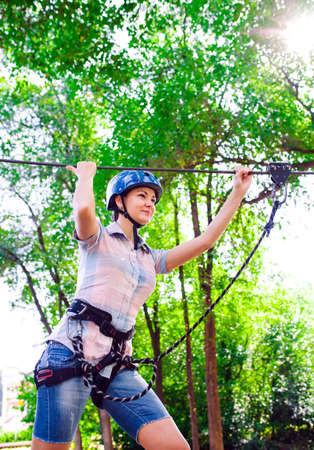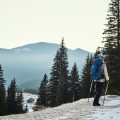1. The Importance of Navigation Skills in a Tech-Driven World
In today’s America, kids and teens are growing up surrounded by technology. GPS apps and smartphones make it easy to get from point A to point B without ever looking at a map or compass. But what happens when there’s no cell signal, the battery dies, or technology fails? This is why teaching navigation skills—beyond just tapping on a screen—is a core part of outdoor education across the U.S.
Why Teach Navigation Without Devices?
Relying only on digital devices can leave young people vulnerable in unexpected situations. Outdoor educators emphasize hands-on learning to help kids and teens:
| Skill | How It Helps |
|---|---|
| Resilience | Learning to problem-solve in nature builds grit and perseverance when things don’t go as planned. |
| Self-Reliance | Finding your way with a map and compass encourages independence and critical thinking. |
| Confidence | Mastering new skills outdoors gives kids pride and boosts their belief in themselves. |
The Digital Divide: City vs. Wilderness
In American cities, navigation means following street signs and landmarks. But in wild places like national parks, forests, or even large suburban parks, trails can be confusing and cell service unreliable. Knowing how to read a topographic map or use a compass can turn an emergency into an adventure—or prevent one entirely.
Cultural Connection: American Traditions of Outdoor Skills
Outdoor navigation is part of classic American experiences like summer camp, Boy Scouts, Girl Scouts, and family road trips to public lands. Teaching these skills connects kids to generations of adventurers who learned to explore the land long before smartphones existed.
Building navigation skills isn’t about rejecting technology—it’s about making sure that when it matters most, our next generation is prepared to handle the unexpected, stay safe, and enjoy all that America’s great outdoors have to offer.
2. Core Tools and Traditional Techniques
Essential Navigation Tools Every Kid Should Know
When teaching navigation skills beyond relying on cell phones, it’s important to start with the basics. In U.S. outdoor education, three main tools stand out: the map, the compass, and natural cues from the environment. These time-tested tools help kids and teens learn how to find their way—even when there’s no signal or technology available.
The Big Three: Map, Compass, and Nature
| Tool | How It Helps | U.S. Outdoor Example |
|---|---|---|
| Map (Topo Map) | Shows terrain, elevation, trails, and landmarks. | Navigating Yellowstone National Park trails. |
| Compass | Helps you find direction (North, South, East, West). | Orienteering at a scout camp in the Appalachians. |
| Natural Cues | Sun’s position, moss growth, river flow direction. | Finding your bearings in the Rockies without tools. |
Understanding U.S.-Standard Topo Maps
In America, topographic (topo) maps are often used for outdoor adventures. These maps show elevation through contour lines and mark important features like rivers, lakes, mountain peaks, and established trails. Teaching kids how to read these maps helps them recognize where they are—and where they want to go—on public lands like national parks and state forests.
Key Features on American Topo Maps
- Contour Lines: Show hills and valleys; closer lines mean steeper terrain.
- Trail Markers: Indicate official hiking routes such as those in Yosemite or Shenandoah National Park.
- Landmarks: Rivers, lakes, campsites, ranger stations—helpful for orientation.
- Scale: Shows real-world distances so kids can estimate how far they need to travel.
Navigating U.S. Public Lands: Landmarks and Trails
The United States is home to a huge network of public lands—national parks, state parks, national forests, and wilderness areas. Each area has its own unique landmarks that can be used for navigation:
- Mile Markers: Found on many long-distance trails like the Appalachian Trail or Pacific Crest Trail.
- Trailheads: Where hikes begin; usually marked with signs and maps in places like Grand Canyon National Park.
- Shelters & Campsites: Noted on most maps; useful for planning rest stops during longer adventures.
- Lakes & Rivers: Natural boundaries that can help orient young explorers as they navigate.
A Real-World Scenario: Putting Skills into Practice
If a group of teens is hiking in Rocky Mountain National Park and loses cell service, knowing how to use a topo map and compass lets them identify their location by matching nearby peaks or streams to the map. By following trail markers or natural features like rivers heading downhill, they can safely return to a ranger station or campsite—even without technology.

3. Engaging Youth with Real-World Scenarios
Bringing Navigation Skills to Life
Helping kids and teens master navigation is much more effective when lessons are hands-on, fun, and connected to real outdoor adventures. In the U.S., outdoor education often takes place in familiar settings like state parks or during Boy Scouts outings. By simulating real-world scenarios, youth can see why these skills matter—especially when cell service drops out and digital maps aren’t available.
Hands-On Activities That Make a Difference
Instead of just talking about how to use a compass or read a map, educators can engage students through activities that put them right into the action. Here are some examples:
| Activity | Description | Common U.S. Setting |
|---|---|---|
| Mock Search-and-Rescue Mission | Youth work together to find “lost hikers” using only maps and compasses. | State park trails, summer camps |
| Orienteering Challenge | Kiddos race to different checkpoints using clues and navigation tools. | Boy Scouts jamborees, school field trips |
| Role-Playing Emergencies | Kids act out scenarios like getting separated from the group, practicing how to stay safe and signal for help. | After-school programs, family hikes |
Connecting Lessons to Everyday Adventures
These activities aren’t just for special events—they fit right into many classic American outdoor experiences. For example, while hiking in a state park, leaders can pause at trail junctions for quick “map check” games. During Boy Scouts outings, troops might take turns leading the way or setting up mini-rescue drills. This approach helps navigation skills stick because they’re linked to places and situations kids already know and enjoy.
Encouraging Teamwork and Confidence
Real-world practice not only teaches technical skills but also builds teamwork, leadership, and confidence. When youth solve problems together—like finding a hidden marker or figuring out which trail leads home—they feel proud of what they can do without relying on technology. Over time, these experiences help young adventurers become safer, smarter, and more independent outdoors.
4. Fostering Teamwork and Leadership
Why Navigation is a Team Sport
In U.S. outdoor education, teaching navigation isn’t just about using a map and compass on your own. It’s also about learning how to work together, communicate clearly, and make good decisions as a group. These skills are core values in many American youth programs, like Boy Scouts, Girl Scouts, summer camps, and school adventure clubs.
Teamwork in the Wild: What It Looks Like
When kids and teens learn to navigate outdoors, they often split up roles—like one person reading the map, another spotting trail markers, and someone else keeping track of time or distance. This helps everyone contribute and practice leadership in real situations. Here’s what these teamwork roles can look like:
| Role | Main Responsibility | Key Skills Practiced |
|---|---|---|
| Navigator | Reads the map and plans the route | Leadership, problem-solving |
| Timekeeper | Keeps track of pace and breaks | Organization, communication |
| Scout/Lookout | Watches for landmarks or hazards ahead | Observation, responsibility |
| Scribe/Recorder | Takes notes or documents progress | Attention to detail, cooperation |
| Group Leader (rotates) | Makes final decisions when needed | Decision-making, confidence |
Communication: The Heart of Group Success
No matter what role each team member takes on, clear communication is essential. In U.S. outdoor programs, instructors encourage kids to speak up if they’re lost or confused, share new ideas, and check in with each other regularly. This open talk not only keeps everyone safe but also builds trust—a big part of American group adventures.
Real-Life Example: A Typical Navigation Challenge
Imagine a group of middle schoolers at an outdoor camp in Colorado. They need to find their way back to base camp after a day hike. The Navigator checks the map while the Scout looks for trail signs. The Timekeeper reminds the group when it’s time for a break. If there’s disagreement about which path to take, the Group Leader helps guide a discussion so everyone has a say before making a decision together.
The Takeaway: More Than Just Finding Your Way
Learning navigation outdoors in the U.S. means learning how to be part of a team. Through these experiences, kids and teens build confidence as leaders and teammates—skills that stick with them far beyond their next hike or camping trip.
5. Safety, Stewardship, and Staying Found
Best Practices for Outdoor Safety
Exploring America’s great outdoors means being prepared for anything—from sudden weather changes in the Rockies to dense forests in the Pacific Northwest or arid deserts in the Southwest. Teaching kids and teens how to stay safe is a top priority in U.S. outdoor education programs.
Essential Safety Tips
| Tip | How It Helps | U.S. Example |
|---|---|---|
| Always Tell Someone Your Plan | Makes it easier to find you if you get lost | Leave a trip itinerary with family before hiking in Yosemite |
| Packing the Ten Essentials | Covers basic survival needs like navigation, first aid, and weather protection | Required on Boy Scouts backpacking trips nationwide |
| Dressing for Local Conditions | Prevents hypothermia, heat stroke, or sunburn | Layering clothes for New England’s changing weather; wearing wide-brim hats in Arizona deserts |
| Recognizing Hazards | Avoids accidents with wildlife, plants, or terrain | Learning to spot poison ivy in Eastern states or rattlesnakes in Texas |
Leave No Trace: Stewardship in Action
The Leave No Trace principles are at the heart of responsible adventure across all 50 states. By practicing these simple rules, young explorers help protect wild places for future generations:
- Plan Ahead and Prepare: Know your route and bring what you need.
- Travel and Camp on Durable Surfaces: Stick to trails and campsites.
- Dispose of Waste Properly: Pack out all trash—even fruit peels!
- Leave What You Find: Don’t pick flowers or disturb historic sites.
- Minimize Campfire Impact: Use camp stoves instead of fires where possible.
- Respect Wildlife: Observe animals from a distance; never feed them.
- Be Considerate of Others: Share the trail and keep noise down.
Staying Found: Preventing and Responding to Getting Lost
Strategies to Stay On Track
- Buddies Are Best: Always hike with a partner or group—never alone.
- Mark Your Trail: Look back often so you remember landmarks.
- Use Maps & Compasses: Practice reading maps and using a compass—even if you have GPS!
- KISS (Keep It Simple): Teach kids to stick to one trail at a time, especially in maze-like areas like Appalachian forests.
If You Get Lost: What To Do Anywhere in the U.S.
| Step | Description/Why It Matters |
|---|---|
| S.T.O.P.—Stop, Think, Observe, Plan | This method helps you stay calm and make smart choices if you lose your way |
| Stay Put | Easier for searchers to find you—especially in thick woods or canyons |
| Signal For Help | Use a whistle (three blasts), bright clothing, or a mirror |
| Shelter In Place If Needed | If night falls or storms roll in, build a simple shelter using local materials |
Diverse Climates, Tailored Approaches
No matter where your adventure takes place—from Alaska’s snowy peaks to Florida’s swamps—teaching safety, stewardship, and navigation skills ensures that every kid and teen can explore the outdoors confidently while respecting nature and staying found.


